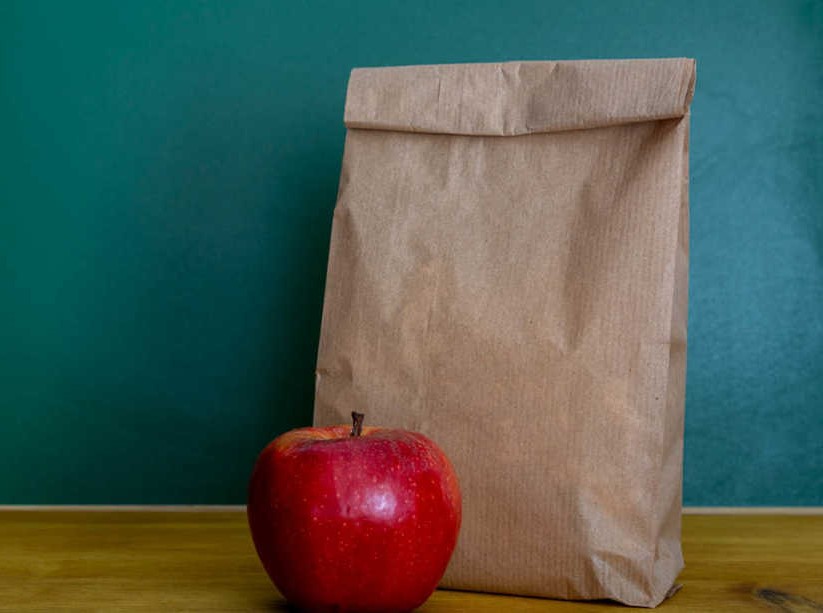by Andrea Ball
CSBA’s work to promote student health, well-being and achievement, and to secure fair funding for California public education, is multifaceted. It includes support for federal nutrition programs and improvements in administration of state and local meal programs, while addressing student nutrition as part of a holistic approach to student learning and achievement. Our focus on supporting efforts to close gaps in achievement and improve outcomes for all students was central to our support of the Local Control Funding Formula (LCFF).
The enactment of the LCFF and the Local Control and Accountability Plan (LCAP) requirements, with their focus on addressing equity and closing gaps in achievement, present interesting, sometimes surprising, intersections of our policy and advocacy work.. While school meal programs and LCFF embrace the goal of addressing needs and providing resources to low-income students, their differing requirements for data collection and eligibility present serious practical and policy challenges for schools.
CSBA is working with member school districts and other stakeholders, including California Food Policy Advocates (CFPA) the California School Nutrition Association and the California Association of School Business Officials, as we research implications of the differing requirements and seek solutions. We are also in discussions with California Department of Education (CDE) officials, legislative offices and the Brown administration.
Meals programs in high-poverty schools
This information is excerpted and summarized from materials produced by CFPA and available on their website.
The Provision 2 option for participation in the federal school meals program requires that high-poverty schools generally identify eligible students on a four-year cycle, either through applications that their families complete or by the direct certification process (for example, living in households that participate in CalFresh or CalWORKS).
Schools utilizing Provision 2 must serve meals at no charge to all students, and are reimbursed at the rates and student eligibility percentages identified in the base year of the schools’ four-year cycle. The CDE may approve an extension of the cycle at a school’s request and upon certain criteria. According to a CFPA analysis, there were approximately 1,638 public schools utilizing the Provision 2 option in 2012, and these schools enrolled an estimated 1 million students.
A new option designed to benefit high-poverty schools—the Community Eligibility Provision—will be available to California schools beginning in 2014-15. In this option, students are identified either through direct certification or other documentation from a program official, such as a homeless shelter director. See the CFPA fact sheet.
Meal eligibility and LCFF
Here’s where meal program requirements and the state’s new school funding formula come into play. The LCFF requires annual counts of low-income students (as well as English learners and foster youth) to be submitted via the California Longitudinal Pupil Achievement Data System (CALPADS)—and low-income status is based on FRPM eligibility. CDE has informed local educational agencies (LEAs) that individual student low-income status must be reported via CALPADS every year in order for the state to calculate LCFF funding. CDE has also informed LEAs through a Management Bulletin that federal student achievement accountability requires the annual identification and submission of individual low-income pupils from all schools.
When policy goals collide
This annual requirement for individual student-level identification under LCFF is bumping up against the federal Provision 2 option requirements and the Community Eligibility Provision.
As noted above, Provision 2 schools must verify student FRPM eligibility on a prescribed cycle—generally every four years, not every year. The goal of the program and this option in particular is to make the meal program more efficient and to make sure needy students get fed. Schools using Provision 2 have historically high levels of students from low-income households—and these families are typically not accustomed to completing annual income forms, and they may even be leery of providing such detailed personal information.
School districts are taking strong steps to meet the requirement to collect income information in this first year under LCFF, whether or not they are in a Provision 2 base year; they’re giving families incentives to complete and return the forms, and they’re working with community groups to reach parents. In a recent CDE conference call, districts shared best practices. Several, including Fresno and Santa Ana unified school districts, reported good return rates and innovative outreach efforts. Oakland USD, Los Angeles USD and San Diego USD are also using a variety of approaches and are working with community-based organizations and showing positive results. Still, many forms from students in Provision 2 schools remain unreturned, and the impact for these schools and districts is significant. Unless they are in the base year of the federal meals program, these schools cannot use school meal program funds to cover the costs (including staff time) of collecting income information and must use an alternative form, not the regular meal application because the information is not required for the meals program, only for LCFF accountability purposes.
Striving for solutions
CSBA and stakeholders are advocating that schools be held harmless for under-counted students in this transitional 2013-14 school year. State policymakers have been generally receptive to proposals—for instance, dropping 2013-14 counts from the three-year average that will be used to calculate supplemental and concentration funding under LCFF—but details remain to be worked out.
We also continue to develop and pursue a longer-term solution. We remain concerned that having to collect family income information every year in these schools is a significant change that will have ramifications on Provision 2 and Community Eligibility participation as well as on the LCFF funding purposes:
- If income eligibility forms are not returned in high-poverty schools, those schools will receive less LCFF funding than they need to serve the targeted students.
- The need for annual family eligibility documentation from families under LCFF could militate against their schools’ continued participation in a meal program that ensures all students in high-poverty schools receive free meals—those schools may abandon the Provision 2 option and return to the regular meals program. The result: Some students will not get the meals they need.
CSBA is striving to find a resolution that will ensure hungry students are fed and that participation in school meal programs continues, while also ensuring LCFF funding and accountability provisions are met. We recognize that other longer-term policy developments may help address this issue; one long-term solution will improvements in California’s process for and participation in the direct certification of student school meals eligibility. We continue to work with all parties to address both the long- and short-term concerns. Stay tuned for updates on legislative and administrative developments.






Be the first to reply